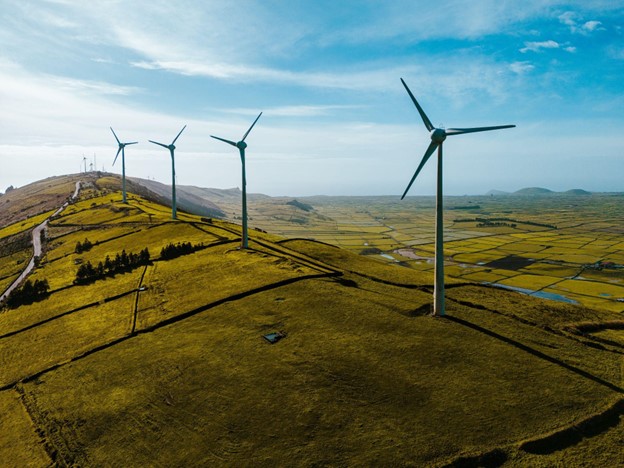Functionality Unveiled: How Windmills and Wind Turbines Serve Different Purposes
Windmills and wind turbines - just two sides of the same coin, right? After all, they look similar to one another and both harness and use the power of the wind - what more needs to be said? In spite of their physical resemblance and their inclination for turning wind into mechanical energy, windmills and wind turbines have historically served very different purposes.

It is interesting to consider how the high-level design of both windmills and wind turbines are so similar, and yet they can convert the very same power source into such different outcomes. Let’s take a deeper dive into what distinguishes windmills and wind turbines, how they’re used, and most importantly, how they work.
Windmills - What They’re Used for and How Do They Work?
Historically, one might find a windmill on a farm grinding grain into flour, or near various waterways to pump water. Though these might sound like humble beginnings, the use of windmills undeniably made quicker work of these and other laborious tasks.
To pummel grain, the wind would turn the vanes or blades, turning the connected central shaft. Attached to the shaft - two large, flat, and heavy stones that could effortlessly ground grain into flour. For pumping, the wind energy captured by the vanes would be used to pump water into homes or to communal fountains, or used for irrigation.
While these last two applications encompass much of the recorded functionality of windmills, they do offer considerable functional differences relative to modern wind turbine technology. For starters, the glaring difference between windmills and wind turbines is the location of the blades. The blades of the former are located close to the ground (where most of the work is done) whereas the blades of the latter are installed at far greater heights, where air currents are more powerful. Interestingly, the location of the blades contributed to their design. For example, since windmills were built low to the ground and relied on the weaker surface air currents, wide blades were used to maximize wind energy capture. At their peak during and after the Industrial Revolution, millions of windmills were installed in the United States, each generating valuable mechanical energy to do everything from pump water to power factories. Their propagation was largely due to their relatively simplistic design and implementation; erecting a windmill would quickly provide access to wind power that could be converted to mechanical energy for different purposes.
Wind Turbines - What They’re Used for and How Do They Work?
Windmills have been used for various applications for hundreds of years. The wind turbine, in spite of being introduced in the late 19th century, is still very much considered the “new kid on the block”. The father of the wind turbine, Charles Brush, first erected a wind turbine connected to an electric generator to power his Ohio home. Though his initial construction did not generate a great deal of power, others were able to run with the concept.
Subsequent wind turbine variations were built taller and with longer blades in order to harness more power. Rather than pumping water or crushing grain, this rotational energy is used to turn a connected generator, which in turn generates electricity. Over the years, wind turbine technology has been used to charge industrial batteries, power homes and buildings, and even contribute to the global energy mix.
Thanks to the aerodynamic design, lightweight materials, blade length, and height, it actually doesn’t take much wind for wind turbines to start producing energy; even winds ranging 5 to 10 mph - what most of us would consider a gentle to moderate breeze - is enough to generate electricity. Modern wind turbines also have the ability to power down in the event of extreme weather or exceptionally high winds, a feature that safeguards the equipment.
Ancient Technology Expanded Upon for the Modern Age
For centuries, humanity has been harnessing wind power and converting it to mechanical energy to facilitate everything from grinding grain to pumping water. With the introduction of the generator, that mechanical energy could be converted to electricity, a power source with a far greater number of potential applications.
Interestingly, wind power remains at the forefront of energy discussions. As we collectively move towards limiting and eventually expunging our reliance on fossil fuels, wind farms and wind turbines in particular represent tangible infrastructure that promises to generate decades’ worth of zero-emission energy.
As the green energy sector grows, there will be a need for wind turbine technicians to keep the blades spinning. If that sounds interesting, consider checking out George Brown College’s Wind Turbine Technician program or speak to a program consultant at George Brown College by dialing 1-888-553-5333.
